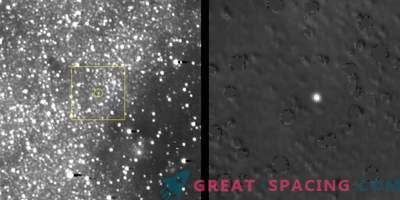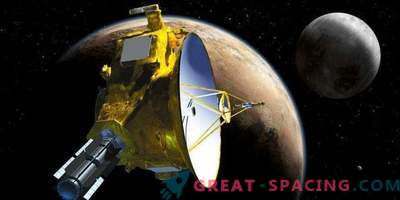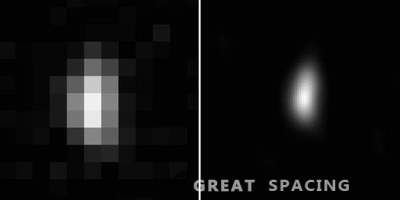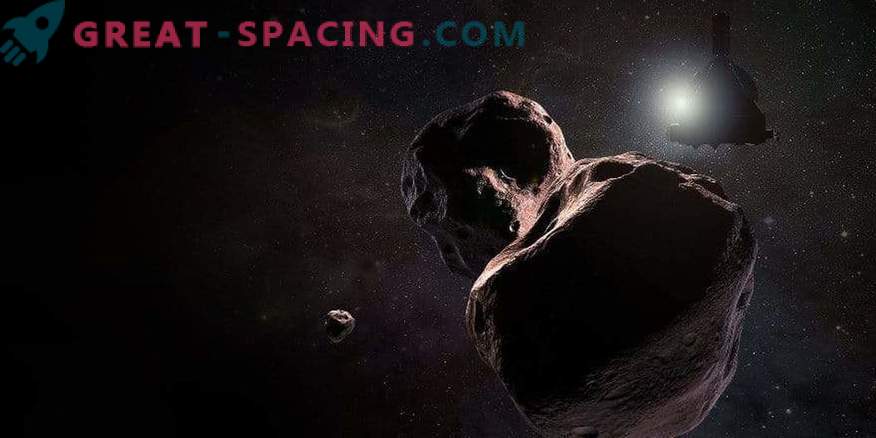
The New Horizons NASA spacecraft first spotted the next target in the Kuiper Belt, called the Ultima Thule. This happened 4 months before the closest New Year's span of 2019. The team members were especially pleased and surprised. They did not expect the LORRI device to be able to see a tiny dim object located at a distance of 172 million km against the background of stars. A series of 48 photographs was obtained on August 16 and transferred to Earth within a few days.
The image field is saturated with background stars, which always makes it difficult to find weak objects. In the first pictures, the Ultima Thule appears as a small footprint away from the star, which is 17 times brighter. With the New Horizons approaching, the Ultima Thule will be viewed more and more clearly. The first detection is important because this data will help to improve the ship's course over the next 4 months. The rapprochement is scheduled for January 1, 2019.
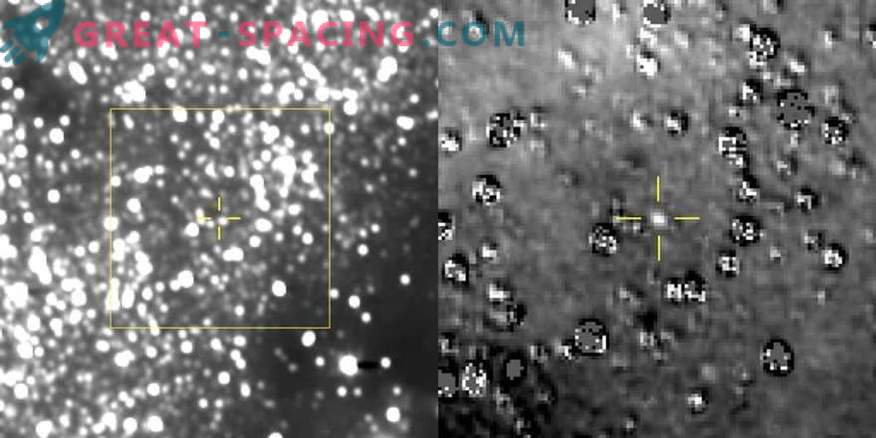
The figure on the left is a composite image formed by adding 48 different exposures from the reconnaissance imager LORRI on New Horizons. Harvested August 16, 2018. The predicted position of the Ultima Thule object in the Kuiper Belt is at the center of the yellow mark. On the right is an enlarged view of the yellow area after subtracting the field of the background star captured by LORRI in September 2017. Ultima Thule is clearly visible in this image and is close to the place indicated by scientists. Everything suggests that New Horizons is moving in the right direction. Many artifacts are created by small irregular registrations between new images and patterns or internal changes in the brightness of stars. At the time of the review, the remoteness of Ultima Thule was 172 million km from the vehicle and 6.5 billion km from the Sun The span of Ultima Thule will be the first serious study in history of a small object in the Kuiper Belt and the most distant study of any planetary body in history. The previous record also belongs to the New Horizons, who in July 2015 raced past Pluto, breaking the Voyager-1 figures with his famous “Pale Blue Dot” picture (1990).
